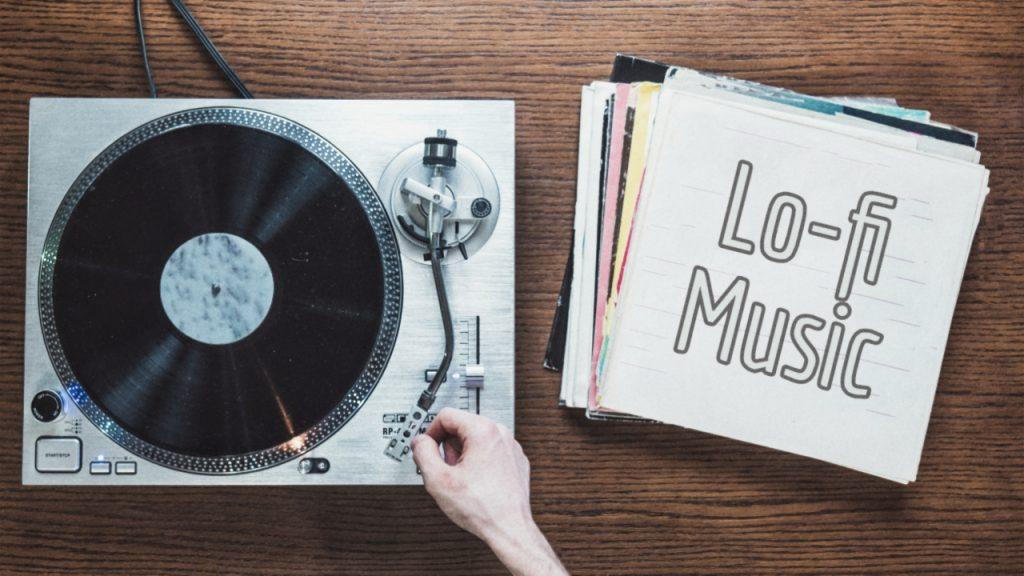
After the first and second article, where I go with the next round of lo-fi related questions and my answers. As always, I will add some links and desktop research, where it is worth adding, on the other hand I dare to answer them all from my perspective. I produce lo-fi beats for awhile, I hope you will enjoy learning my view either on certain topics.
How is lo-fi music made?
With love and little butterflies flying under a rainbow. Just kidding. There is no ‘one good way’ for making lo-fi beats. There are several ones you may learn about, including the use of VSTs, such as Izotope Vinyl. A free effect that offers vinyl like sound if you are using DAWs. On the other hand, your gadget or instrument itself may offer similar sound. It is a bit my case with PO-33 KO. Back then I created a long article on how to produce your first lo-fi beat (including links for free samples etc), feel free to check it out. For me at the end the point is not how but the results. It is that soothing warm vibe with some hiss and crackling noise that makes lo-fi truly a lo-fi release.
When was lo-fi music created?
Hm, interesting question I have found on Google. To be fair no one really knows it. I mean like most genres, if you read 5 articles on the origins, you will learn 6 different things. What I believe is the following: it should be originating from the ’80s. Low-fee aka low fidelity music as a “concept” should have emerged along with hi-fi. When we realised there is hi-fi, that was the time to realise there should be lo-fi as well, right? I dropped a bit more here with Wiki links, if you wish to go deeper.
When did lofi music start?
The reason, why I raise this topic after the previous one because I like splitting the two topics. Why? Simply, as I stated purely my opinion above, realising that we have music that does not sound that good as a hi-fi, it does not mean it is trendy already. For me the start of lo-fi is more close to the ’00 when J Dilla and Nujabes became well-known artist. Both adding a bit of spice to lofi music in general. J Dilla with the imperfect beats, humanising beat making, whereas Nujabes made a great mix of old-style music fused with hip-hop being used for anime OST and other purposes. Worth checking both artists.
Furthermore ChilledCow (later Lofi Girl) and other YouTube channels emerged in the ’00s as well. With them becoming more and more well-known on the social media platforms offered possibilities for upcoming artists to share their music. Let it be a piano player or a sampler. And slowly this genre began to expand and became more and more well-know.
Where to download lo-fi music?
Like everywhere. A common question on Quora and other channels. But really. Literally YouTube is full with them. Many artists offer their beats for free or close to free. It is also my policy that if I release an EP or album, I add some free singles to it. So people can grab them free.
What does lofi music do?
A bit unclear question from Google but I hope I understood the question right. Like what is it doing with the listener. I mean most lo-fi beats aim to soothe mind and help focusing. It is coming from the fact that most lofi beats are instrumental and vocals tend to shift focus easier. You are to focus on the meaning of the vocals, but less caring with an instrumental song. Furthermore lo-fi is offering less dynamic range. To put it simple, you may expect less different between loud and less loud parts in the song. So at the end you are considering that “rhythmic noise” more a background one as if it was dynamic.
At the end I have to add that it is my personal opinion. But I do believe that what lofi music offers is more focus on your task. If you are into listening to music, while working, with lo-fi you can focus more. I’m quite sure more studies will come on this matter, especially as this genre is getting more focus. Let’s hope to learn more in the future together. Until then, let me return later with another batch of popular lo-fi topics in the future.
Leave a Reply